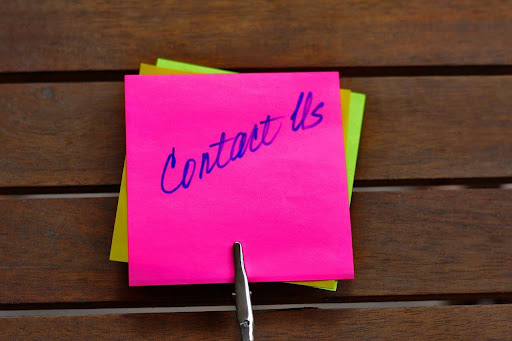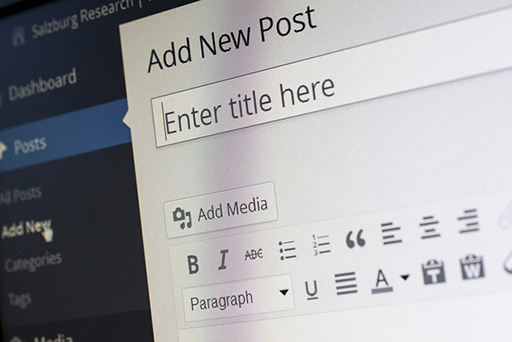10 Landing Page Mistakes That Can Kill Your Conversions
The success of your landing page often ties directly to the success of your business. After all, that landing page is going to be the arrival point for leads coming from all your marketing channels, including ads, social media, organic SEO traffic, and more. You need that page to be as good as possible at turning leads into customers.
According to Unbounce, the median conversion rate is 4.3% for landing pages across all industries. If your conversion rates are below that number — or below the standard for your industry — that likely means you're committing one of the landing page mistakes found on this list.
Let's take a look at some of the most common landing page mistakes. And what you can do to fix them.
1 - Poorly Designed Call-to-Action (CTA)
Your call-to-action is the cornerstone of your landing page. It's what guides your visitors toward taking the desired action, whether that's signing up for a newsletter, downloading a resource, or making a purchase. If your CTA is poorly designed, you risk losing those potential conversions.
A well-designed CTA stands out visually and is easy to understand. Use contrasting colors to make the button pop, and ensure the text is clear and concise. Instead of a vague "Submit," use action-oriented language like "Get Your Free eBook" or "Start Your Free Trial."
Your CTA should be straightforward and irresistible. Forcing users to hunt for a button or wonder what the button does will only introduce needless friction, which risks lowering your conversion rates.
2 - Slow Page Load Times
Both people and search engines prefer websites that load quickly. If your landing page takes too long, visitors are more likely to bounce before they even see what you have to offer. According to a 2017 report by Akamai, a one-second delay in load times — from 0.7 seconds to 1.7 seconds — can increase bounce rates by up to 50%.
To speed up your page, optimize images, use efficient coding practices, and leverage browser caching. You can also consider using a content delivery network (CDN) to distribute your content more efficiently.
You should also regularly test your page speed and make necessary adjustments to keep load times to a minimum.
3 - Overwhelming or Confusing Layout
When visitors land on your page, they should immediately understand what it's about and what action they should take next. An overwhelming or confusing layout can deter them from engaging further.
Cluttered pages with too much information, inconsistent design elements, or a lack of clear hierarchy can leave visitors frustrated and disinterested.
Aim for a clean, intuitive design. Use whitespace strategically to create a sense of order and focus attention on key elements. Break up text with headings, bullet points, and images to make it more digestible. Ensure your navigation is simple, guiding users seamlessly toward your CTA. These are all things you can figure out with the help of a company that offers website design in Denver, as this website shows.
4 - Lack of Mobile Optimization
More than half of all web traffic now comes from mobile devices. As a result, if your landing page isn't optimized for mobile, you're likely losing a significant portion of potential conversions. Mobile users expect a seamless experience, and if they encounter issues like tiny buttons, difficult navigation, or slow load times, they'll quickly leave.
Responsive design is essential. Make sure your page looks and functions well on all devices, from desktops to smartphones. Test your landing page on various devices and screen sizes to ensure it provides a smooth and enjoyable user experience for everyone.
5 - Weak or Unclear Value Proposition
Your value proposition is what convinces visitors that your offer is worth their time and effort. If it's weak or unclear, they'll have little incentive to stay on your page, let alone convert.
Craft a strong, compelling value proposition by focusing on your unique selling points. Use clear, concise language to articulate the benefits, and highlight what sets you apart from competitors. Place your value proposition prominently on your landing page so it's one of the first things visitors see.
6 - Using Low-Quality Images
Visuals play a crucial role in capturing attention and conveying your message. Low-quality images can make your landing page look unprofessional and untrustworthy.
Invest in high-quality images that are relevant to your content and resonate with your audience. Professional photography, videos, or well-designed graphics can enhance your page's visual appeal and credibility. Ensure images are properly sized and optimized for fast loading without sacrificing quality.
7 - Excessive or Distracting Pop-Ups
Pop-ups can be effective for capturing leads or promoting offers, but when used excessively or in a distracting manner, they can do more harm than good. Multiple pop-ups or intrusive designs can frustrate visitors, causing them to leave your page in annoyance.
Use pop-ups sparingly and strategically. Ensure they are relevant to the visitor's experience and provide genuine value. Consider timing and placement carefully, and always prioritize user experience over aggressive marketing tactics.
8. Ineffective or Generic Headlines
Your headline is the first thing visitors see, and it plays a crucial role in grabbing their attention and encouraging them to read further. Ineffective or generic headlines can fail to spark interest or communicate the value of your offer, leading to higher bounce rates.
Craft compelling headlines that are clear, concise, and benefit-focused. Use action-oriented language and address the needs or pain points of your audience. Test different headlines to see which ones resonate most with your visitors and drive higher engagement.
9 - Complicated Forms
Forms are often necessary for capturing leads, but if they're too complicated or lengthy, they can deter visitors from completing them. Long forms with too many fields or unclear instructions can be overwhelming and lead to abandonment.
Simplify your forms by asking for only essential information. Use clear labels and provide guidance where needed. Consider using multi-step forms to break up the process and make it feel less daunting. The easier you make it for visitors to fill out your form, the more likely they are to convert.
10 - Ignoring SEO Best Practices
Even if you have a fantastic landing page, it won't do much good if people can't find it. Ignoring SEO best practices can severely limit your page's visibility and organic traffic. Proper optimization can have a staggering impact on your overall traffic, while targeting the right keywords can help improve conversions and reduce bounce rates.
Implement SEO best practices by conducting keyword research and integrating relevant keywords naturally into your content. Optimize meta tags, headers, and alt text for images. Ensure your page loads quickly and is mobile-friendly. Regularly update your content to keep it fresh and relevant. For a high-converting design, you can also consider some custom landing page design services like Draftss, tailored to enhance user experience and boost engagement. These steps can help improve your landing page's visibility and attract more organic traffic.
Copyright © . All Rights Reserved



